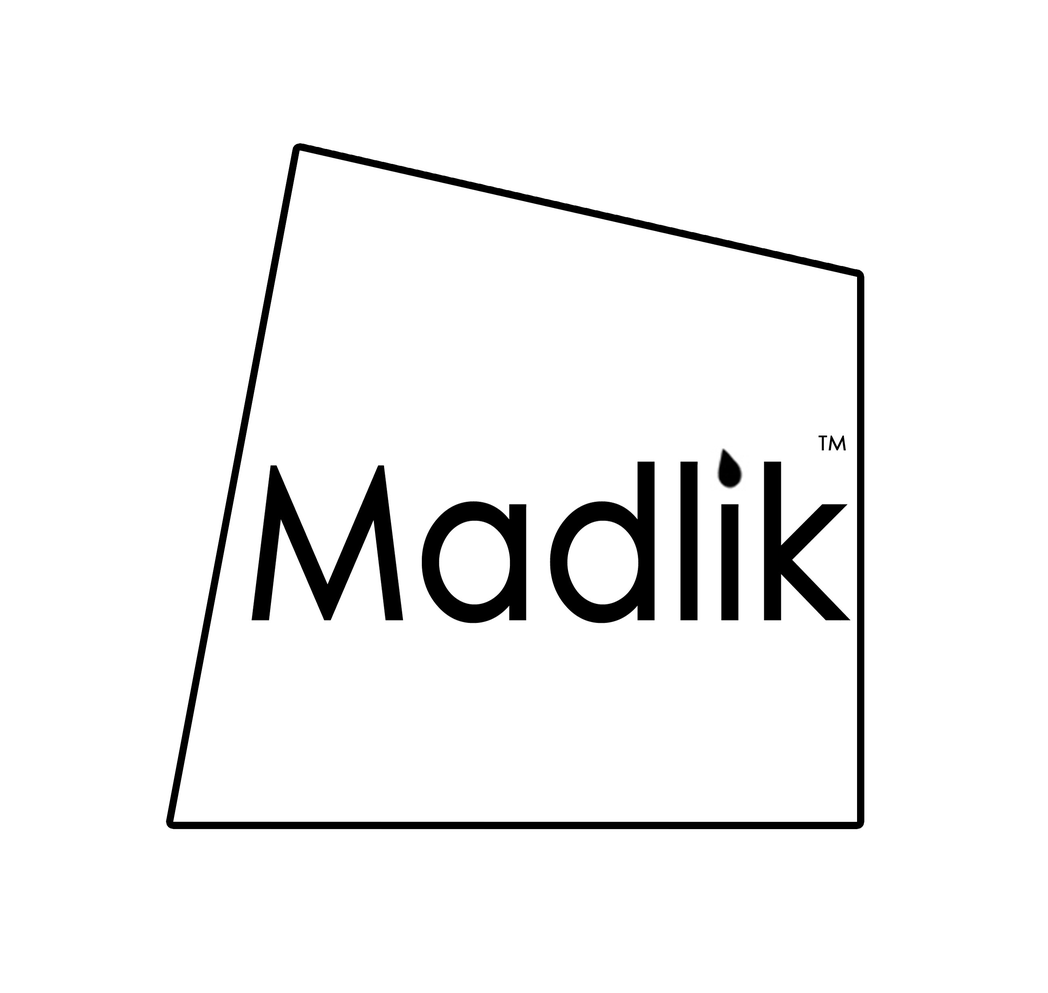Don't miss an episode! Subscribe to the Madlik podcast: Spotify | Apple Podcasts | Google Podcasts
and Join Madlik on Clubhouse every Thursday so you can participate in our weekly live discussion of the Parsha
Link to Transcript here: https://madlik.com/2024/02/15/paradigm-shift/
(לא) וְעָשִׂ֥יתָ מְנֹרַ֖ת זָהָ֣ב טָה֑וֹר מִקְשָׁ֞ה תֵּעָשֶׂ֤ה*(בספרי ספרד ואשכנז תֵּיעָשֶׂ֤ה) הַמְּנוֹרָה֙ יְרֵכָ֣הּ וְקָנָ֔הּ גְּבִיעֶ֛יהָ כַּפְתֹּרֶ֥יהָ וּפְרָחֶ֖יהָ מִמֶּ֥נָּה יִהְיֽוּ׃ (לב) וְשִׁשָּׁ֣ה קָנִ֔ים יֹצְאִ֖ים מִצִּדֶּ֑יהָ שְׁלֹשָׁ֣ה ׀ קְנֵ֣י מְנֹרָ֗ה מִצִּדָּהּ֙ הָאֶחָ֔ד וּשְׁלֹשָׁה֙ קְנֵ֣י מְנֹרָ֔ה מִצִּדָּ֖הּ הַשֵּׁנִֽי׃ (לג) שְׁלֹשָׁ֣ה גְ֠בִעִ֠ים מְֽשֻׁקָּדִ֞ים בַּקָּנֶ֣ה הָאֶחָד֮ כַּפְתֹּ֣ר וָפֶ֒רַח֒ וּשְׁלֹשָׁ֣ה גְבִעִ֗ים מְשֻׁקָּדִ֛ים בַּקָּנֶ֥ה הָאֶחָ֖ד כַּפְתֹּ֣ר וָפָ֑רַח כֵּ֚ן לְשֵׁ֣שֶׁת הַקָּנִ֔ים הַיֹּצְאִ֖ים מִן־הַמְּנֹרָֽה׃ (לד) וּבַמְּנֹרָ֖ה אַרְבָּעָ֣ה גְבִעִ֑ים מְשֻׁ֨קָּדִ֔ים כַּפְתֹּרֶ֖יהָ וּפְרָחֶֽיהָ׃ (לה) וְכַפְתֹּ֡ר תַּ֩חַת֩ שְׁנֵ֨י הַקָּנִ֜ים מִמֶּ֗נָּה וְכַפְתֹּר֙ תַּ֣חַת שְׁנֵ֤י הַקָּנִים֙ מִמֶּ֔נָּה וְכַפְתֹּ֕ר תַּחַת־שְׁנֵ֥י הַקָּנִ֖ים מִמֶּ֑נָּה לְשֵׁ֙שֶׁת֙ הַקָּנִ֔ים הַיֹּצְאִ֖ים מִן־הַמְּנֹרָֽה׃ (לו) כַּפְתֹּרֵיהֶ֥ם וּקְנֹתָ֖ם מִמֶּ֣נָּה יִהְי֑וּ כֻּלָּ֛הּ מִקְשָׁ֥ה אַחַ֖ת זָהָ֥ב טָהֽוֹר׃ (לז) וְעָשִׂ֥יתָ אֶת־נֵרֹתֶ֖יהָ שִׁבְעָ֑ה וְהֶֽעֱלָה֙ אֶת־נֵ֣רֹתֶ֔יהָ וְהֵאִ֖יר עַל־עֵ֥בֶר פָּנֶֽיהָ׃ (לח) וּמַלְקָחֶ֥יהָ וּמַחְתֹּתֶ֖יהָ זָהָ֥ב טָהֽוֹר׃ (לט) כִּכָּ֛ר זָהָ֥ב טָה֖וֹר יַעֲשֶׂ֣ה אֹתָ֑הּ אֵ֥ת כׇּל־הַכֵּלִ֖ים הָאֵֽלֶּה׃ (מ) וּרְאֵ֖ה וַעֲשֵׂ֑ה בְּתַ֨בְנִיתָ֔ם אֲשֶׁר־אַתָּ֥ה מׇרְאֶ֖ה בָּהָֽר׃ {ס}
(31) You shall make a lampstand of pure gold; the lampstand shall be made of hammered work; its base and its shaft, its cups, calyxes, and petals shall be of one piece. (32) Six branches shall issue from its sides; three branches from one side of the lampstand and three branches from the other side of the lampstand. (33) On one branch there shall be three cups shaped like almond-blossoms, each with calyx and petals, and on the next branch there shall be three cups shaped like almond-blossoms, each with calyx and petals; so for all six branches issuing from the lampstand. (34) And on the lampstand itself there shall be four cups shaped like almond-blossoms, each with calyx and petals: (35) a calyx, of one piece with it, under a pair of branches; and a calyx, of one piece with it, under the second pair of branches, and a calyx, of one piece with it, under the last pair of branches; so for all six branches issuing from the lampstand. (36) Their calyxes and their stems shall be of one piece with it, the whole of it a single hammered piece of pure gold. (37) Make its seven lamps—the lamps shall be so mounted as to give the light on its front side— (38) and its tongs and fire pans of pure gold. (39) It shall be made, with all these furnishings, out of a talent of pure gold. (40) Note well, and follow the patterns for them that are being shown you on the mountain.
(ט) כְּכֹ֗ל אֲשֶׁ֤ר אֲנִי֙ מַרְאֶ֣ה אוֹתְךָ֔ אֵ֚ת תַּבְנִ֣ית הַמִּשְׁכָּ֔ן וְאֵ֖ת תַּבְנִ֣ית כׇּל־כֵּלָ֑יו וְכֵ֖ן תַּעֲשֽׂוּ׃ {ס}
(9) Exactly as I show you—the pattern of the Tabernacle and the pattern of all its furnishings—so shall you make it.
רַבִּי לֵוִי בְּרַבִּי אוֹמֵר, מְנוֹרָה טְהוֹרָה יָרְדָה מִן הַשָּׁמַיִם, שֶׁאָמַר לוֹ הַקָּדוֹשׁ בָּרוּךְ הוּא לְמֹשֶׁה, וְעָשִׂיתָ מְנוֹרַת זָהָב טָהוֹר (שמות כה, לא). אָמַר לֵיהּ: כֵּיצַד נַעֲשֶׂה אוֹתָהּ. אָמַר לוֹ: מִקְשָׁה תֵּעָשֶׂה (שם). אַף עַל פִּי כֵן נִתְקַשָּׁה בָּהּ, וְיָרַד מֹשֶׁה וְשָׁכַח מַעֲשֶׂיהָ. עָלָה וְאָמַר, רִבּוֹנוֹ שֶׁל עוֹלָם, שָׁכַחְתִּי מַעֲשֶׂיהָ. הֶרְאָה לוֹ הַקָּדוֹשׁ בָּרוּךְ הוּא לְמֹשֶׁה, וְעוֹד נִתְקַשָּׁה בָּהּ. אָמַר לֵיהּ: וּרְאֵה וַעֲשֵׂה (שם פסוק מ), עַד שֶׁנָּטַל הַקָּדוֹשׁ בָּרוּךְ הוּא מַטְבֵּעַ שֶׁל אֵשׁ וְהֶרְאָה לוֹ עֲשִׂיָּתָהּ. אַף עַל פִּי כֵן נִתְקַשָּׁה עַל מֹשֶׁה. אָמַר לוֹ הַקָּדוֹשׁ בָּרוּךְ הוּא לֵךְ אֵצֶל בְּצַלְאֵל וְהוּא יַעֲשֶׂה אוֹתָהּ. יָרַד מֹשֶׁה וְאָמַר לִבְצַלְאֵל, וּמִיָּד עֲשָׂאָהּ. הִתְחִיל מֹשֶׁה תָּמֵהַּ וְאוֹמֵר: אֲנִי כַּמָּה פְּעָמִים הֶרְאָה לִי הַקָּדוֹשׁ בָּרוּךְ הוּא וְנִתְקַשֵּׁיתִי לַעֲשׂוֹתָהּ, וְאַתָּה שֶׁלֹּא רָאִיתָ אוֹתָהּ עָשִׂיתָ מִדַּעְתְּךָ. בְּצַלְאֵל, בְּצֵל אֵל הָיִיתָ עוֹמֵד כְּשֶׁהֶרְאָה לִי הַקָּדוֹשׁ בָּרוּךְ הוּא עֲשִׂיָּתָהּ וְאָמַר וְעָשִׂיתָ.
וּלְפִיכָךְ, כְּשֶׁחָרַב בֵּית הַמִּקְדָּשׁ, נִגְנְזָה הַמְּנוֹרָה. וְזוֹ אֶחָד מִן חֲמִשָּׁה דְּבָרִים שֶׁנִּגְנְזוּ, הָאֲרוֹן, וְהַמְּנוֹרָה, וְהָאֵשׁ, וְרוּחַ הַקֹּדֶשׁ, וְהַכְּרוּבִים. וּכְשֶׁיֵּעוֹר הַקָּדוֹשׁ בָּרוּךְ הוּא בְּרַחֲמָיו וְיִבְנֶה בֵּיתוֹ וְהֵיכָלוֹ, הוּא מַחֲזִירָן לִמְקוֹמָן וּמְשַׂמְּחָן אֶת יְרוּשָׁלַיִם. מִנַּיִן, שֶׁכֵּן כָּתוּב, יְשֻׂשׂוּם מִדְבָּר וְצִיָּה וְתָגֵל עֲרָבָה וְתִפְרַח כַּחֲבַצֶּלֶת, פָּרֹחַ תִּפְרַח וְתָגֵל (ישעיה לה, א-ב).
R. Levi bar Rabi said, “A pure menorah descended from the heavens. Because the Holy One, blessed be He, said to Moses (in Exod. 25:31), ‘And you shall make a menorah of pure gold.’ He said to Him, ‘How shall we make [it]?’ He said to him (ibid. cont.), ‘Of hammered work shall the menorah be made.’ Nevertheless Moses had difficulty; for when he descended, he had forgotten its construction. He went up and said, ‘Master of the world, I have forgotten [it].’ He said to him (in Exod. 25:40), ‘Observe and make [it].’ Thus He took a pattern of fire and showed him its construction, but it was still difficult for Moses. The Holy One, blessed be He, said to him, ‘Go to Bezalel and he will make it.’ [So] Moses went down to talk to Bezalel, [and] he made it immediately. Moses began to wonder and say, ‘In my case, how many times did the Holy One, blessed be He, show it to me; yet I had difficulty in making it. Now without seeing it, you have made it from your own knowledge. Bezalel (btsl'l), were you perhaps standing in (b) the shadow (tsl) of God ('l) when the Holy One, blessed be He, showed it to me and said (in Exod. 25:31), “And you shall make”?’ Therefore when the Temple was destroyed, the menorah was stored away.”
Now this was one of the five things that were stored away: the ark, the menorah, the fire, the holy spirit, and the cherubim. When the Holy One, blessed be He, returns in his mercy to build His house and His Temple, He will restore them to their place and cause Jerusalem to rejoice. Thus it is stated (in Is. 35:1-2), “The desert and the arid land shall be glad, and the wilderness shall rejoice and blossom like a crocus. It shall blossom abundantly and be glad.”
ובצלאל בן אורי וגו׳ עשה את כל אשר צוה ה' את משה AND BEZALEEL THE SON OF URI etc. MADE ALL THAT THE LORD COMMANDED MOSES — It is not stated here: אשר צֻוָּה (Bezaleel made all that he had been commanded), but “[Bezaleel made] all that the Lord commanded Moses” — even regarding such things which his teacher (Moses) did not tell him, his own opinion was in agreement with what had been told to Moses on Sinai (Jerusalem Talmud Peah 1:1; Bereishit Rabbah 1:14).
[For Moses bade Bezaleel to make the vessels first and the Tabernacle afterwards but Bezaleel said to him: “Surely, it is the way of the world (the usual way) first to build a house and then to place the household utensils in it!” He (Moses) replied to him: “So, indeed, did I hear from the mouth of the Holy One, blessed be He”. Moses further said to him: (בצלאל), you must have been sitting in the shadow of God (בצל אל), for certainly did thus God command me!” And consequently Bezaleel made the Tabernacle first and afterwards he made the vessels (cf. Berakhot 55a).
שְׁלֹשָׁה דְּבָרִים נִתְקַשּׁוּ לְמֹשֶׁה, וְהֶרְאָם לוֹ הַקָּדוֹשׁ בָּרוּךְ הוּא בָּאֶצְבַּע. וְאֵלּוּ הֵן, מַעֲשֵׂה הַמְּנוֹרָה, וְהַיָּרֵחַ, וְהַשְּׁקָצִים. מַעֲשֵׂה הַמְּנוֹרָה כֵּיצַד הָיָה. שֶׁבְּשָׁעָה שֶׁעָלָה מֹשֶׁה, וְהָיָה הַקָּדוֹשׁ בָּרוּךְ הוּא מַרְאֶה לוֹ בָּהָר הֵיאַךְ יַעֲשֶׂה אֶת הַמִּשְׁכָּן. כֵּיוָן שֶׁהֶרְאָה לוֹ הַקָּדוֹשׁ בָּרוּךְ הוּא מַעֲשֵׂה הַמְּנוֹרָה, נִתְקַשָּׁה בָּהּ מֹשֶׁה. אָמַר לוֹ הַקָּדוֹשׁ בָּרוּךְ הוּא, הֲרֵי אֲנִי עוֹשֶׂה אוֹתָהּ לְפָנֶיךָ. מֶה עָשָׂה הַקָּדוֹשׁ בָּרוּךְ הוּא. הֶרְאָה לוֹ אֵשׁ לְבָנָה וְאֵשׁ אֲדֻמָּה וְאֵשׁ שְׁחֹרָה אֵשׁ יְרוּקָה, וְעָשָׂה מֵהֶן אֶת הַמְּנוֹרָה, גְּבִיעֶיהָ כַּפְתּוֹרֶיהָ וּפְרָחֶיהָ וְשֵׁשֶׁת הַקָּנִים. וְהוּא אוֹמֵר לוֹ: כָּךְ וְכָךְ עֲשֵׂה אוֹתָם, שֶׁנֶּאֱמַר: וְזֶה מַעֲשֵׂה הַמְּנוֹרָה (במדבר ח, ד). מְלַמֵּד, שֶׁהֶרְאָה לוֹ הַקָּדוֹשׁ בָּרוּךְ הוּא בָּאֶצְבַּע אֶת הַמְּנוֹרָה, וְאַף עַל פִּי כֵן נִתְקַשָּׁה בָּהּ הַרְבֵּה מֹשֶׁה לַעֲשׂוֹתוֹ. מֶה עָשָׂה הַקָּדוֹשׁ בָּרוּךְ הוּא, חָקְקָהּ עַל כַּף יָדוֹ שֶׁל מֹשֶׁה. אָמַר לוֹ: וּרְאֵה וַעֲשֵׂה בְּתַבְנִיתָם (שמות כה, מ), כְּשֵׁם שֶׁחֲקַקְתִּיהָ עַל כַּף יָדְךָ. וְאַף עַל פִּי כֵן נִתְקַשָּׁה בָּהּ מֹשֶׁה וְאָמַר, מִקְשָׁה תֵּעָשֶׂה הַמְּנוֹרָה (שמות כה, לא). כְּלוֹמַר, מַה קָּשֶׁה לַעֲשׂוֹת. אָמַר לוֹ הַקָּדוֹשׁ בָּרוּךְ הוּא, הַשְׁלֵךְ אֶת הַזָּהָב לָאֵשׁ וְהַמְּנוֹרָה תֵּעָשֶׂה מֵאֵלֶיהָ, שֶׁנֶּאֱמַר: מִקְשָׁה תֵּעָשֶׂה הַמְּנוֹרָה. כְּתִיב תֵּעָשֶׂה, מֵעַצְמָהּ תֵּעָשֶׂה. מְלַמֵּד, שֶׁנִּתְקַשָּׁה לוֹ הַמְּנוֹרָה, וְהֶרְאָה לוֹ הַקָּדוֹשׁ בָּרוּךְ הוּא בָּאֶצְבַּע, שֶׁנֶּאֱמַר זֶה.
Three things Moses found difficult and the Holy One, blessed be He, showed them to him with a finger and these are them: The making of the menorah, the moon, and creeping things. In the making of the menorah, how [was it]? When Moses ascended [Sinai], the Holy One, blessed be He, was showing him on the mountain how he would make the tabernacle. When He showed him the making of the menorah, Moses found it difficult. The Holy One, blessed be He, said to him, “See, I am making it before you.” What did the Holy One, blessed be He, do? He showed him white fire, red fire, black fire, and green fire. Then from them He made the menorah, its bowls, its knobs, its blossoms, and the six branches. Then He said to him (in Numb. 8:4), “This is the making of the menorah.” This teaches that the Holy One, blessed be He, showed him with a finger. But nevertheless, [Moses] found it difficult. What did the Holy One, blessed be He, do? He engraved it on the palm of Moses’ hand. He said to him, “Go down and make it just as I have engraved it on your hand.” Thus it is stated (in Exod. 25:40), “Observe and make them [by means of] their pattern.” Even so, he found it difficult and said (in Exod. 25:31), “with difficulty (mqshh) will the menorah be made,” meaning to say, how difficult it was to make. The Holy One, blessed be He, said to him, “Cast the gold into the fire, and it will be made automatically.” So it is stated, “with difficulty will the menorah be made” [be made (a reflexive form, in the niph'al) is what is written, i.e.,] was made of its own accord. This teaches that Moshe had difficulty with the menorah, and the Holy One, blessed be He, showed it to him with a finger, as stated (in Numb. 8:4), “this.”
ὅρα ποιήσεις κατὰ τὸν τύπον τὸν δεδειγμένον σοι ἐν τῷ ὄρει
Septuagent
τύπος Transliteration typos
(מ) וַחֲזֵי וַעֲבֵיד כִּדְמוּתְהוֹן דִּאַתְּ מִתְחֲזִי בְּטוּרָא:
(40) Observe [carefully] and make them like the pattern that will be shown to you on the mountain.
(מ) וַחֲמֵי וַעֲבַד בְּצִיּוּרֵיהוֹן דְּאַנְתְּ מִתְחֲמֵי בְּטַוְורָא
(40) And look thou, and make according to their forms which thou hast seen in the mount.
5179 týpos (from 5180 /týptō, "strike repeatedly") – properly, a model forged by repetition; (figuratively) the correct paradigm, based on reliable precedent for others to then follow, (i.e. the right example, a proper pattern).
[[
5179 týpos (from 5180 /týptō, "strike repeatedly") – properly, a model forged by repetition; (figuratively) the correct paradigm, based on reliable precedent for others to then follow, (i.e. the right example, a proper pattern).
See; https://biblehub.com/greek/5179.htm
A lot of the foreign words that Dr. [Gabriel] Birnbaum mentioned ... [about the influence of foreign words on Hebrew is.] - the Greek typos. ... that one Greek word gave us three distinct words in Hebrew:
dfus דפוס,
tofes טופס and
tifus טיפוס. Let's take a look.
The Greek word typos is the origin of the English word "type":
late 15c., "symbol, emblem," from Latin typus "figure, image, form, kind," from Greek typos "a blow, dent, impression, mark, effect of a blow; figure in relief, image, statue; anything wrought of metal or stone; general form, character; outline, sketch," from root of typtein "to strike, beat," from PIE *tup-, variant of root *(s)teu- (1) "to push, stick, knock, beat" (see steep (adj.)).
Extended 1713 to printing blocks of metal or wood with letters or characters carved on their faces, usually in relief, adapted for use in letterpress printing. The meaning "general form or character of some kind, class" is attested in English by 1843, though the corresponding words had that sense in Latin and Greek.
As in English, the Greek typos had both the the sense of "to strike" and "a form, kind." (I would not have guessed, as I type on my keyboard, that the earlier meaning was to "to strike.") The Hebrew words reflect those different meanings as well.
Dfus is closest to the sense of a "dent, impression". It is found in early Rabbinic Hebrew, such as Mishna Menachot 11:1, where it refers to a baking mold that was used to prepare the offering of the shtei halechem (the two loaves of bread), brought on Shavuot. While many editions of the Talmud have the word written in the form familiar today - dfus דפוס, other manuscripts preserve what is likely the original spelling - tfus טפוס. The letters "t" and "d" both produce dental stop sounds, and just saying them out loud makes it understandable how tfus became dfus. After the Talmudic meanings of "form, model, mold", in modern Hebrew dfus took on the sense of "print, printing, press." The related verb, hidpis הדפיס means "to print" and a madpeset מדפסת is a "printer."
Tofes טפס, in Talmudic Hebrew, meant the standard, boilerplate lines in a document (in contrast with the toref תורף, which refers to the specific details of that document, like the dates, names, etc.) Today it means any kind of form to be filled out.
Tipus is the most abstract of the three, meaning "type, kind, class." In modern Hebrew, the adjective tipusi טיפוסי - "typical" (which also derives from typos) was added. In Hebrew slang, a tipus is an unusual character.
See: https://www.balashon.com/2021/07/dfus-tofes-and-tipus.html
Tipus - טִפּוּס
Pronunciation: Ti⋅pus
Literal translation: Sort, personality, type
When referring to someone as a tipus in Israel, it is generously used in a bad or dissing connotation. Although, it can also be used to describe someone, not necessarily in a bad way.
Example: "I think you should go out with him, he is definitely your tipus".
See: https://www.israelkonnect.com/israel-post/tipus-%D7%98-%D7%A4-%D7%95-%D7%A1
[Hebrew] "Tippus" - טיפוס - an eccentric, bizarre individual
The word itself - "TipPUS" translates perfectly to the English word "type", but when you pronounce it TIPpus it gets a second meaning: a strange, bizarre, eccentric individual. Mostly the ones you see on the street and can't help but ask yourself what's their story. See: https://www.reddit.com/r/DoesNotTranslate/comments/6kzqfm/hebrew_tippus_%D7%98%D7%99%D7%A4%D7%95%D7%A1_an_eccentric_bizarre/
וכן תעשו לדורות אם יאבד אחד מן הכלים או כשתעשו כלי בית עולמים כגון שולחנות ומנורות וכיורות ומכונות שעשה שלמה כתבנית אלו תעשו אותם. ואם לא יהיה המקרא מחובר למעלה הימנו לא היה לו לכתוב וכן תעשו, אלא כן תעשו, והיה מדבר על עשיית אהל מועד וכליו. לשון רש"י. (רש"י על שמות כ״ה:ט׳)
ולא ידעתי שיהיה זה אמת שיתחייב שלמה לעשות כלי בית עולמים כתבנית אלו, ומזבח הנחשת עשה שלמה עשרים אמה ארך ועשרים רחב (דהי"ב ד א):
ור"א אמר (אבן עזרא על שמות כ״ה:ט׳) וכן תעשו הכלים, כי בתחלה אמר ועשו לי מקדש: ועל דרך הפשט אין צורך לכל זה, אבל בא הכפל לחזוק וזרוז, אמר ועשו לי מקדש, בית וכלים כמקדש מלך ובית ממלכה (עמוס ז יג), ושכנתי בתוכם, בבית ובכסא הכבוד אשר יעשו לי שם, ככל אשר אני מראה אותך את תבנית המשכן הזה אשר אמרתי שאשכון בו בתוכם ואת תבנית כל כליו וכפל וכן תעשו כולכם בזריזות וחריצות,
AND SO SHALL YE MAKE IT — [also] “in future generations. If one of the vessels is lost, or when you make the vessels of the Sanctuary of Jerusalem, such as the tables, the candelabrums, the lavers, and the bases which Solomon made — after the pattern of these you shall make them. If, however, this [part of the verse] were not connected with the preceding part [which reads: According to all that I show thee, the pattern of the Tabernacle, and the pattern of all the vessels], Scripture should not have written: ‘and’ so shall ye make it, but: “so shall ye make it,” and then it would be speaking of the making of the Tent of Meeting and its vessels.” Thus is Rashi’s language.
But I do not know if this is true, that Solomon was bound to make the vessels of the Sanctuary of Jerusalem after the pattern of these vessels [of the Tabernacle]. The altar of brass which Solomon made was twenty cubits long and twenty wide! [*II Chronicles 4:1. The altar of the Tabernacle was five cubits long and five cubits broad (further, 27:1).] And Rabbi Abraham ibn Ezra wrote: “And so shall ye make — the vessels, for at the beginning He said, And let them make Me a Sanctuary.”
In line with the plain meaning of Scripture there is no need for all this. Rather, the duplication [and so shall ye make it] has the purpose of expressing emphasis and eagerness. Thus He said: “And let them make Me a Sanctuary — a house and vessels — as a Royal Sanctuary and seat of Majesty, that I may dwell in the midst of them in the house and on the Throne of Glory which they will make for Me there. According to all that I show thee the pattern of this Tabernacle of which I have said that I will dwell in the midst of them, and the pattern of all the vessels thereof. He repeated, and so shall ye all make it with eagerness and diligence.
שבעה קני מנורה מעכבין זה את זה שבעה כו': ראיתי לצייר בכאן צורת המנורה שלימה
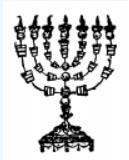
Illustration in Seafria Commentary of Rambam on the Mishnah
While Maimonides does not describe the shape of the branches in his Mishneh Torah, he does address the topic in a rare manuscript of his “Commentary to the Mishnah,”9 in which he hand-draws the design of the menorah. In this drawing, the branches are depicted as straight lines from the stem to the full height of the menorah
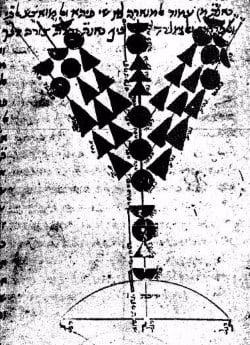
An illustration of the Temple menorah drawn by Maimonides
Lest there be any confusion, Maimonides’ son, Rabbi Abraham ben Harambam, in his commentary to Exodus,10 writes that the branches “extend from the stem of the menorah to the top in a straight line (beyosher), as my father of blessed memory drew, not in arc-shape as others have drawn.”
Maimonides’ manuscript was sold to the University of Oxford in 1693. While Rabbi Ricci, who passed away in 1743, apparently visited London on his travels, it is highly unlikely he would have visited Oxford, and even if he did, it is unlikely he would have been given permission to enter the Bodleian library, as openly practicing Jews were allowed entry into Oxford only in 1856. Additionally, even if he were to have gained entry, he probably would not have found the manuscript, since the Hebrew manuscripts only began to be catalogued in 1868, and the complete catalogue was published 18 years later in the year 1886.11
Had Rabbi Ricci and Rabbi Riqueti seen this manuscript with Maimonides’ own hand-drawn illustrations, they would not have deduced that Maimonides’ omission of the word “diagonal” in describing the shape of the branches meant they were rounded. They would have concluded that, like the Talmud, Maimonides had not purposely omitted the word “diagonal”; he simply did not describe the trajectory of the branches.12
In light of this, the Rebbe points out that there is really no earlier source than Rabbi Ricci and Rabbi Riqueti that describes the branches of the menorah as rounded.
See: Why Insist on Depicting a Straight-Branched Menorah? By Yehuda Shurpin
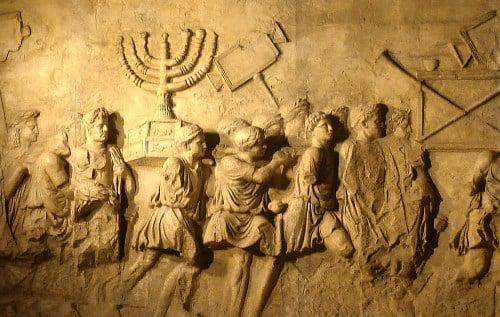
if we are to claim that the branches of the menorah were indeed straight, then why would the Arch of Titus, which was built just a few years after the destruction and depicts the plunder of Jerusalem, depict the branches in a rounded fashion?
The Rebbe offers a number of possible explanations.....
Secondly, in addition to “the” official Temple menorah, there were ten candelabras built by King Solomon. And although improbable, it is possible that these other menorahs were rounded. If this were to be the case, then both would be accurate— Rashi and Maimonides would be referring to the original menorah made by Moses, and the Arch of Titus would be depicting one of these other menorahs that was plundered by the Romans during the destruction of the Temple....
It is for this reason that the Rebbe was so insistent that the menorah not be depicted to resemble that of the Arch of Titus. For even if that were indeed a representation of one of Solomon’s menorahs, it is still not the ideal menorah. Therefore, any depiction made now with a rounded menorah is essentially based on the image on the Arch of Titus. So rather than represent our closeness to G‑d, the rounded menorah symbolizes the very opposite—the exile of the Jews and the destruction of the Holy Temple at the hands of the Roman conquerors!
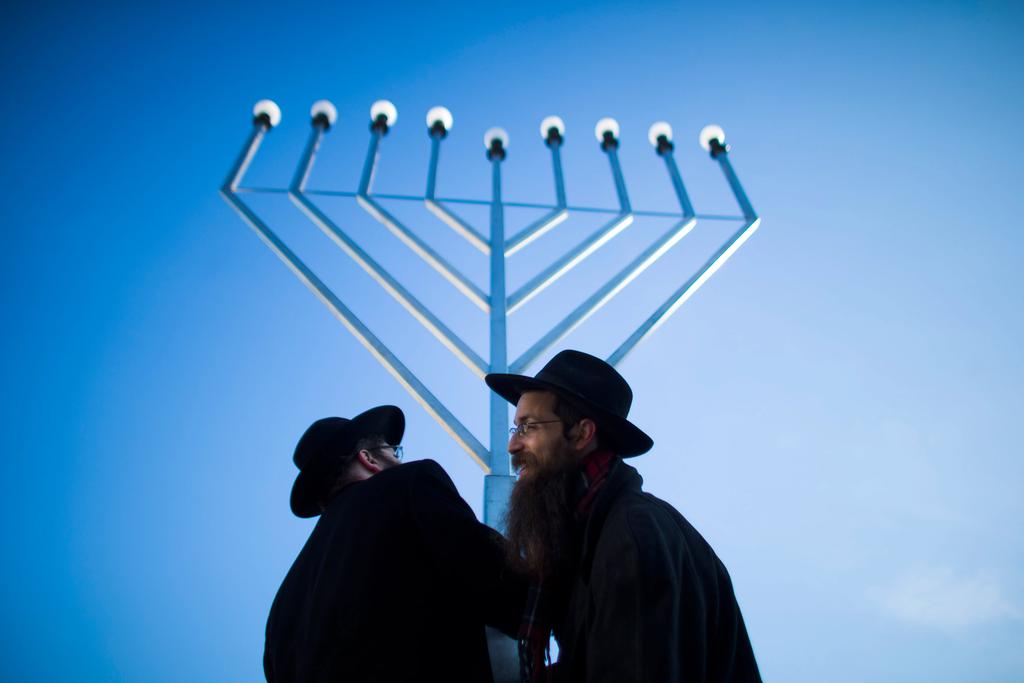
A paradigm shift is a fundamental change in the basic concepts and experimental practices of a scientific discipline. It is a concept in the philosophy of science that was introduced and brought into the common lexicon by the American physicist and philosopher Thomas Kuhn. Even though Kuhn restricted the use of the term to the natural sciences, the concept of a paradigm shift has also been used in numerous non-scientific contexts to describe a profound change in a fundamental model or perception of events.
Incommensurability
the language and theories of different paradigms cannot be translated into one another or rationally evaluated against one another—that they are incommensurable. This gave rise to much talk of different peoples and cultures having radically different worldviews or conceptual schemes—so different that whether or not one was better, they could not be understood by one another.
Gradualism vs. sudden change
Paradigm shifts tend to be most dramatic in sciences that appear to be stable and mature, as in physics at the end of the 19th century. At that time, physics seemed to be a discipline filling in the last few details of a largely worked-out system.
In The Structure of Scientific Revolutions, Kuhn wrote, "Successive transition from one paradigm to another via revolution is the usual developmental pattern of mature science" (p. 12).




